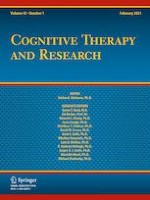25-11-2020 | Original Article
Developmental Differences in Child and Adolescent Reasoning About Anxiety Sensations
Gepubliceerd in: Cognitive Therapy and Research | Uitgave 1/2021
Log in om toegang te krijgenAbstract
Background
The development of reasoning as to the potential negative consequences of emotional sensations is a critical aspect of emotion knowledge and central to cognitive risk for anxiety disorders. The purpose of this paper is to explore the reasoning children and adolescents give for negative interpretations of anxiety sensations, testing a priori hypotheses quantitatively and exploring the content of the reasons qualitatively.
Methods
This study used a cross sectional design with interviews as well as cognitive and emotional assessments in a sample of 227 youth aged 6–17 years. Coding schemes to assess the logical validity, affective valence, and qualitative reasons that youth give to evaluate anxiety sensations and anxiety situations were developed.
Results
Findings indicated diverse reasoning was used and responses could be reliably coded with developmental differences across age, cognitive, and verbal development. The logical sophistication of the reasoning used by youth increased across age in a non-linear manner and linearly with cognitive and verbal abilities. Child anxiety sensitivity and internalizing symptom levels moderated the main effect of age.
Conclusions
The results add to the existing understanding of emotional development and are consistent with the idea that the process of cognitive-emotional understanding is not a simple linear one because various domains may show differential development.
